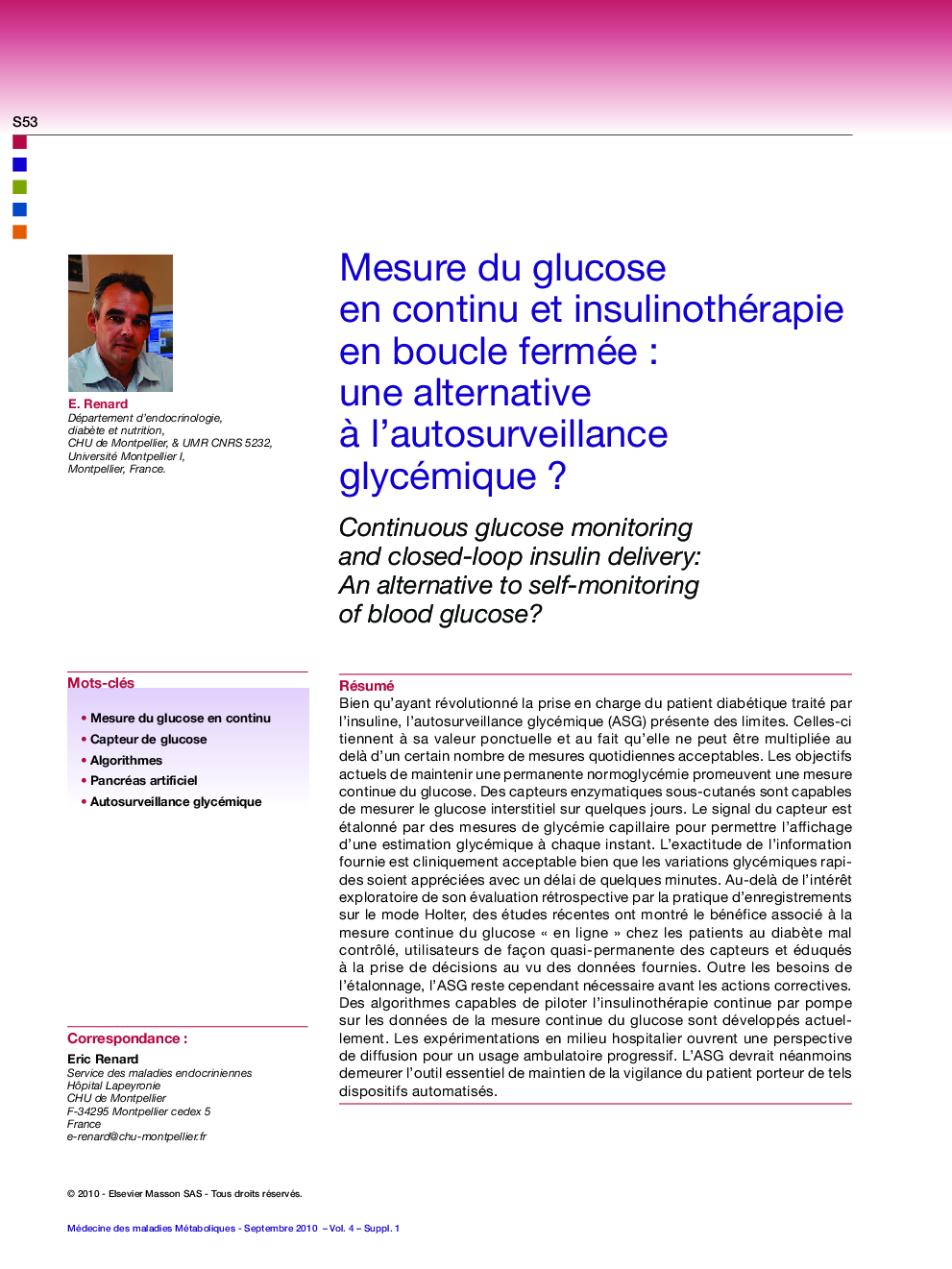| Article ID | Journal | Published Year | Pages | File Type |
|---|---|---|---|---|
| 3275235 | Médecine des Maladies Métaboliques | 2010 | 6 Pages |
Abstract
Although it generated a dramatic change in the therapy of insulin-treated diabetic patients, self monitoring of blood glucose (SMBG) shows some limits. These limits include its punctual value and the fact that it cannot be processed above a number of daily acceptable measurements. The current goals of maintaining permanent normoglycemia promote continuous glucose monitoring. Subcutaneous enzymatic sensors can measure interstitial glucose for several days. The sensor signal is calibrated against capillary glucose measurements to allow the presentation of estimated blood glucose values at all times. The accuracy of provided information is clinically acceptable though quick blood glucose variations are identified after a delay of several minutes. Beyond the investigational value of its retrospective assessment from the practise of recordings according to the Holter mode, recent studies have shown the benefit of continuous glucose monitoring 'online'in patients with poor diabetes control, who use the sensors almost permanently and have been previously trained to take decisions from provided information. Beside the needs for calibration, SMBG remains however necessary before correcting actions. Algorithms able to drive continuous insulin infusion from pumps according to continuous glucose monitoring are currently developed. In-hospital investigations open a perspective of diffusion for gradual ambulatory use. SMBG should however remain a crucial tool to keep the vigilance of the patient wearing such automated devices.
Keywords
Related Topics
Health Sciences
Medicine and Dentistry
Endocrinology, Diabetes and Metabolism
Authors
E. Renard,
